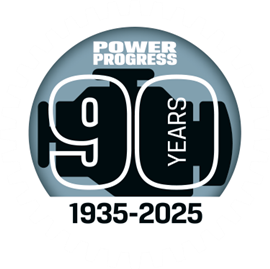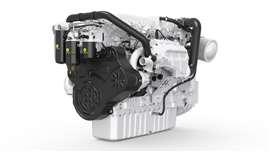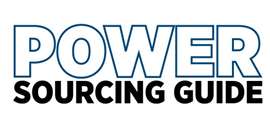Read this article in Français Deutsch Italiano Português Español
John Deere Power Systems’ method of developing marine engines
22 July 2025
Forged on land, proven at sea
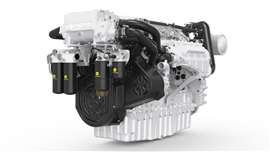 The John Deere JD18P marine engine. (Photo: John Deere Power Systems)
The John Deere JD18P marine engine. (Photo: John Deere Power Systems)
While the daily work of a farmer and a fisherman may appear vastly different, they share a fundamental reliance on powerful and dependable machinery. The internal combustion engine is critical to both operations, directly affecting their livelihood, safety and ability to meet the demands of the work that needs to be done. The shared need for power is why technology developed for agricultural and industrial sectors is highly regarded and desired in the maritime industry.
The powertrain that enables a harvester to navigate hills and rough terrain shares a common engineering DNA with the propulsion system of a vessel powering through rough seas and wind. One operates on land, marked by intense seasonal demands while the other on water, which has its own challenges.
Looking beyond the surface reveals a compelling story of shared engineering. The core challenges — delivering unwavering power, exceptional durability and steadfast reliability — are similar for engines in demanding agricultural settings and those in rigorous marine environments.
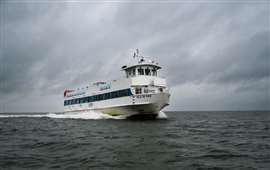 John Deere Power Systems makes engines for ferries.... (Photo: John Deere Power Systems)
John Deere Power Systems makes engines for ferries.... (Photo: John Deere Power Systems)
Shared demands in diverse environments
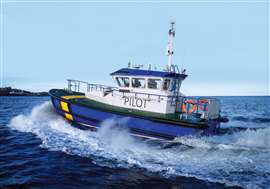 ...and pilot vessels. (Photo: John Deere Power Systems)
...and pilot vessels. (Photo: John Deere Power Systems)
This overlap in operational needs explains how technology refined in rugged agricultural and industrial sectors can adapt to the equally tough marine world. Consider the realities: a farmer in a remote location needs machinery that performs during critical planting or harvesting windows. Similarly, a marine operator — whether a commercial fisherman far offshore or a workboat captain on a tight schedule — depends on engine reliability. Days, even weeks, can pass between port calls, making self-sufficiency and consistent engine performance vital.
In the agricultural and maritime industries, durability and reliability is non-negotiable. Design priorities for an engine built to withstand farming’s rigors translate remarkably well to marine use. These include:
■ Exceptional performance at low loads, a characteristic honed for the mixed-duty cycles of farm equipment.
■ High torque at low engine speeds that provides the muscle needed to maneuver hard-working vessels.
■ A heavy-duty design — originally engineered to withstand punishing land-based conditions — that excels at managing significant and sudden load changes.
Agricultural and commercial marine users also typically recognize the value of premium quality and are often willing to invest in it to ensure long-term performance and dependability.
Leveraging proven platforms
John Deere Power Systems (JDPS) has deep expertise in industrial engine design and adapted these platforms to meet the challenges of the marine market. Its industrial engine lineup provides versatile and reliable power to OEMs across a broad range of sectors, including agriculture, construction, forestry and other heavy-duty applications.
JDPS has provided marine power solutions since 1991, building upon its decades of experience manufacturing engines for heavy-duty off-highway equipment use. The approach involves taking proven industrial engine architecture and tailoring it with marine-specific features and performance characteristics.
A prime example of this strategy is the development of the John Deere JD14 and JD18 marine engines, which are built upon the company’s clean-sheet next-generation engine architecture.
The 13.6 L, six-cylinder JD14 marine engine, with a power range from 298 to 599 kW (400 to 803 hp), is designed for passenger vessels, pilot boats and various workboats. It offers a reduced package size compared to the previous John Deere 13.5 L marine engine.
While designed for demanding commercial applications, these engines are a perfect match for recreational customers that value and require the same durability, unyielding torque and dependable reliability such as adventure yachts crossing oceans and live aboard trawlers.
For applications needing more power, the 18 L JD18 marine engine will deliver power levels from 410 to 599 kW (550 to 803 hp). This opens new possibilities for commercial fishing vessels, passenger vessels and tugboats. The JD18 provides up to 522 kW (700 hp) of continuous power at the M1 rating and up to 599 kW (803 hp) at the M2 rating.
Both engine lines will also be available with variable-speed auxiliary, constant-speed auxiliary and generator ratings.
These new engines incorporate several features from their industrial heritage, now optimized for marine demands:
■ A high-pressure common-rail (HPCR) fuel system optimizes combustion efficiency, boosting the fuel economy that is critical for commercial operators.
■ A rear gear train offers customers up to two rear PTOs and capacity for auxiliary power, enhancing versatility.
■ An overhead camshaft design with hydraulic lash adjusters enables better valve operation and associated gas flow and eliminates valve lash maintenance.
■ Designed for a higher duty cycle (versus the John Deere 13.5 L 6135SFM85) and offering up to a 500-hour extended fluid service interval, the engines aim to maximize operational time on the water.
Furthermore, the JD14 and JD18 marine engines are engineered to meet IMO Tier 2, EPA Tier 3 and EU RCD II emissions certifications and are compatible with a broad spectrum of renewable diesel fuel and biodiesel blends.
Marine propulsion from industrial roots
The development of engines such as the JD14 and JD18 highlights key characteristics defining contemporary marine engines, many benefiting from tough and dependable industrial designs:
■ Reliability and durability: Essential for marine engines enduring long hours, heavy loads and corrosive environments. The resilience of industrial engines designed for harsh, high-vibration conditions provides a strong foundation.
■ Optimized performance and fuel efficiency: Critical given that fuel is a major operational cost. Modern marine engines, like their agricultural counterparts, are engineered for optimal fuel consumption without sacrificing power, often using technologies like HPCR fuel systems refined in industrial applications.
■ Serviceability in demanding conditions: Agricultural and marine engines both operate in demanding, remote environments where reliable service is essential. This shared need drives the importance of features like accessible service points, intelligent diagnostics and simplified maintenance, such as eliminating valve lash adjustments.
■ Broad renewable fuel compatibility: Leveraging extensive R&D from its industrial engine portfolio, the JD14 and JD18 marine engines are engineered for enhanced fuel flexibility. This allows operators to power their vessels with renewable fuel options to meet the evolving demands of the marine industry.
■ Seamless hybrid integration: To support the marine industry’s integration of electrification, both the JD14 and JD18 were developed with variable and constant speed auxiliary ratings for hybrid applications.
A cross-industry imperative
Vessels powered by adapted marine engines are often part of hardworking commercial operations that demand power and reliability. By leveraging proven industrial engine platforms, manufacturers can bring tough, dependable power solutions to the marine market.
This offers significant value to customers operating in some of the world’s most challenging waters. This strategic adaptation ensures that innovations and lessons learned from one demanding sector bring tangible benefits to another, resulting in advanced, reliable power solutions capable of thriving in the toughest conditions on land or at sea.
About the author: Vince Rodomista is manager of Marine Products at John Deere Power Systems.
This article was originally published in the August 2025 issue of Power Progress.
POWER SOURCING GUIDE
The trusted reference and buyer’s guide for 83 years
The original “desktop search engine,” guiding nearly 10,000 users in more than 90 countries it is the primary reference for specifications and details on all the components that go into engine systems.
Visit Now
STAY CONNECTED




Receive the information you need when you need it through our world-leading magazines, newsletters and daily briefings.
CONNECT WITH THE TEAM







